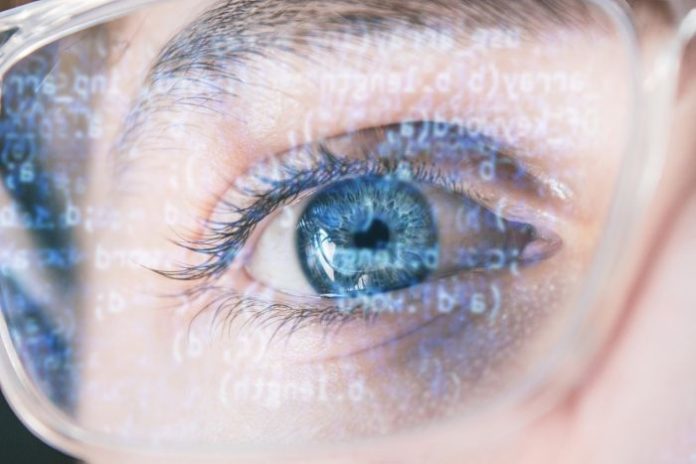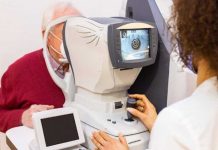Technology has become a constant part of daily life. Our eyes are almost always on a screen, whether it’s a smartphone, computer, LED light, or TV. These gadgets make it easier to talk to people, have fun, and get work done, but they might also be bad for your eyes. Staring at screens and artificial light for a long time can make you uncomfortable, strain your eyes, and even make your vision worse in the long run. Learning how technology affects our eye health and making healthy choices can help us avoid many of these problems.
Key Takeaways
- Prolonged screen use can cause digital eye strain, leading to symptoms like tired eyes and headaches.
- Excessive exposure to blue light from screens may disrupt sleep and potentially harm retinal health.
- Using blue light filters, taking regular breaks, and following the 20-20-20 rule can help protect your eyes.
- Adjusting screen settings and workspace lighting can reduce eye strain significantly.
- Regular eye exams and managing screen time, especially for children, are crucial for maintaining eye health.
Table of contents
Technologies That Affect Eye Health
Screen Time and Digital Devices
One of the most common sources of eye strain today is prolonged screen use. Whether working on a computer, scrolling through a smartphone, or streaming videos, our eyes are constantly focusing at close distances. This continuous focusing effort leads to what is known as digital eye strain or computer vision syndrome.
Some of the symptoms are tired eyes, headaches, dry eyes, and blurry vision. When we stare at screens, we blink less often, which dries out our eyes. If you don’t pay attention to it, this can lead to discomfort and even worse problems over time. These symptoms can get better if you make small changes, like remembering to blink more often and taking short breaks.
Blue Light Exposure
Digital screens, LED lights, and fluorescent bulbs all give off blue light, which is a high-energy light. Natural blue light from the sun helps us sleep and wake up on time, but too much artificial blue light from screens, especially at night, can be bad for our eye health.
If you look at blue light for a long time, it may throw off your body’s natural rhythm, making it harder to fall asleep. Some research also indicates that prolonged exposure may lead to chronic retinal stress, although investigations are still in progress. Using blue light filters or night mode on devices can help lower exposure, especially before bed.
Artificial Lighting (LEDs and Fluorescent Lights)
LED and fluorescent lights are common in homes and offices. They save energy, but they can sometimes be hard on the eyes. Flickering bulbs or bright lights can cause glare and tiredness, which makes it hard for the eyes to relax.
Long hours of work in bright, direct light can hurt your eyes and give you headaches. A softer, more evenly distributed lighting setup can make a big difference. Natural light is best whenever you can get it because it makes it easier for your eyes to adjust throughout the day.
Smartphones and Portable Devices
Smartphones are now an important part of modern life. But small screens and the fact that people tend to hold them close to their faces make it more likely that their eyes will get tired. Putting a lot of effort into reading small text or looking at bright screens all the time can make your eyes tired.
Using smartphones too much may also make you nearsighted, especially if you’re a child or young adult who spends a lot of time inside and less time looking at things far away. Using bigger fonts, keeping the screen at arm’s length, and taking breaks often can all help your eyes feel better and develop better habits.
How to Protect Your Eye Health from Technology
Using Blue Light Filters and Night Modes
Most new devices have features like night mode or blue light filters. These choices change the color temperature of the screen, which lowers the amount of blue light it gives off. These settings help the eyes relax and sleep better at night.
If you spend a lot of time in front of screens, you could also try blue light-blocking glasses or contact lenses designed to reduce digital eye strain. While not everyone needs them, they can help those who experience frequent headaches or eye strain from prolonged device use. For added comfort, ordering contact lenses online could be a simple solution.
Taking Regular Breaks: The 20-20-20 Rule
The 20-20-20 rule is one of the easiest ways to protect your eyes. It says that every 20 minutes, you should look at something 20 feet away for at least 20 seconds. This easy habit lets the eyes relax and refocus after working up close for a long time.
You can use reminders or apps to help you stick with this habit, especially when you’re studying or working for a long time. It can make a big difference in how tired you feel and how comfortable you are over time.
Adjusting Screen Settings and Ergonomics
Proper screen setup can go a long way toward reducing eye strain. Make sure the screen on your device isn’t too bright or too dark compared to the rest of the room by changing the brightness and contrast. If you have to squint, make the text bigger.
Put your screen at eye level and about 20 to 25 inches away from your face. This keeps your neck, shoulders, and eyes from getting too tense. Good posture at your desk also makes you more comfortable and helps you stay focused for longer without getting tired.
Optimizing Lighting and Environment
Good lighting in your workspace can help keep your eyes from getting too tired. Don’t let direct light from overhead lights or sunlight bouncing off your screen bother you. Use blinds, matte filters, or tilt your screen so that it doesn’t get too much light.
When you’re reading or working, a soft desk lamp or other task lighting can give you a balanced contrast. The goal is to make it so your eyes don’t have to keep adjusting between bright and dark areas.
Routine Eye Exams and Screen Time Management for Children
Regular eye exams are important for everyone, especially those who spend hours each day using screens. Eye care professionals can find early signs of strain, dryness, or other problems before they get worse.
It’s even more important for kids to manage their screen time. Too much time in front of a screen can make you nearsighted, which is a condition that is becoming more common around the world. Limiting screen time and encouraging outdoor play can help support your eye health and help them grow.
Conclusion
We can’t ignore how technology affects our eyes, even though it’s a necessary part of modern life. The good news is that small, regular habits like taking breaks, changing screens, and controlling the light can really help your eyes feel better and stay healthy in the long run.
Every day, our eyes have to work hard to keep up with digital demands. You don’t need to make big changes to protect them; you just need to be aware and take care of them regularly. Set aside time for regular eye exams, be aware of how much time you spend on screens and do things to give your eyes the rest they need. This will let you enjoy technology while maintaining your eye health for years to come.











